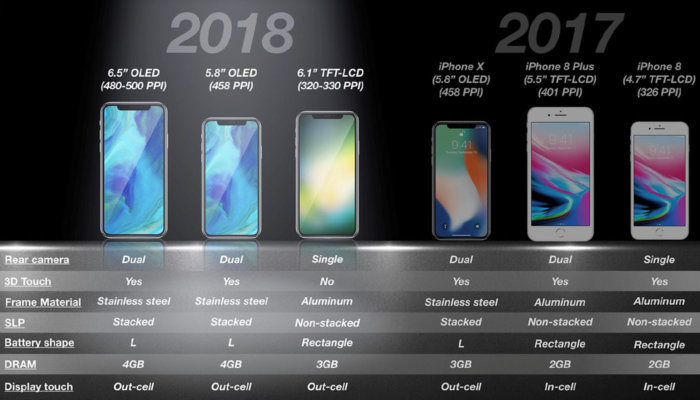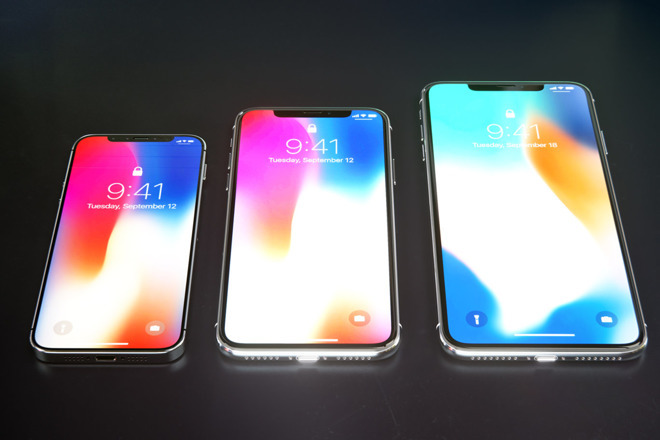The holiday quarter is an extremely crucial one for any smartphone maker, and Apple is no different when it comes to iPhone sales. As the entire business world watched for CEO Tim Cook to release sales number for this acid-test quarter, the leader of the world’s most valuable company announced a 1 percent drop in year-over-year iPhone sales. Has the iPhone sales growth phenomenon permanently ended? Is this the beginning of the end of Apple’s dominance in the smartphone market?
Absolutely not. First of all, we need to keep in mind that Apple actually made more money in the final quarter of 2017 than during the same period in 2016. That’s because iPhone X sales bumped the average iPhone sales price up to $796, which obviously offset the one-percent decline in numbers.
Although Cook made it clear in his press release that iPhone X was the best-selling iPhone every week since its release in November, there have been several estimate revisions. For example, Bernstein analyst Toni Sacconaghi predicted that 79 million iPhones would be sold during the last quarter. Apple only sold 77.3 million units. Moreover, Apple has, according to several reports, cut its production run by half, cutting it from 40 million to 20 million for the first quarter of the new year.
Demand is certainly softer than Apple or anyone else had hoped, but that doesn’t mean this is the end of iPhone as the dominant player in the premium and super-premium smartphone segments.
For one thing, Apple commands an enviable 90% of global smartphone profits. Samsung walks away with much of the remainder, while the bulk of smartphone makers barely break even.
So Apple knows how to turn a profit. And that skill has helped them shape the smartphone industry to their advantage, pushing out smaller players even without entering into the medium or low-end markets. Samsung and Apple now hold pretty much a duopoly outside of China.
That brings us to the People’s Republic. Apple has been trying very hard to increase market share in China, and in October last year the company finally breached 17% market share. Compare that with Samsung’s 2.2% (and declining) share and it’s easy to see that Apple will continue to hold steady in that geography. Cook’s visits to China on various occasions in the past, and his view that Apple will play by China’s rules (remember the VPN cuts from the Chinese App Store?) are finally starting to pay off.
As for the iPhone itself, the company has proved beyond reasonable doubt that it can sustain sales even without any true innovation. If you look at iPhone 6 right through iPhone X you might see the evidences of evolution, but they’ve been incremental when you consider that it took three years and nine unique iPhone models to go from the first to the last, not counting iPhone SE and PRODUCT(RED)™, of course.
That means Apple can still get people to buy its phones past iPhone X. And when you factor in the limited competition in that ultra-high pricing strata, you start to wonder whether a thousand dollars is going to be the new baseline pricing of Apple’s top-end models every year from now.
The one thing Apple has learned over the past few years is that multiple phones every year works like a charm. And I believe we’re going to see that play out in 2018 and beyond. The rumors have already started, and here’s KGI Securities’ Ming-Chi Kuo’s take on this year’s iPhone models.

One thing that’s clear from these assumptions is that features only found on iPhone X last year are going to become standard on more than one model this year, such as their experimental L-shaped battery, the OLED screen, stainless steel frame and so on.
What could also happen is that an iPhone X-like device could be available for a lower price this year, essentially filling the gap for all those who couldn’t or wouldn’t afford $1000+ for an iPhone in 2017. Apple thrives on consumer demand, which is another reason why they could be cutting production on iPhone X this quarter – to nurture that demand in the months leading to September, when the 2018 iPhones will be revealed. That could also be why Apple is reportedly stopping iPhone X production in Summer 2018.
Sadly, there seems to be little or no major innovation planned for this year’s iPhone line-up. But, then again, there’s hardly been any over the past several years. Even iPhone X basically piggybacks on technologies that Apple hasn’t used before, not new technologies in themselves.
As for iPhone sales in the fourth quarter of 2018, they’re likely to be in line with the numbers reported every year. It’s unlikely that Apple will ever see a sudden spurt in iPhone sales again, but the company and its flagship product are going to keep chugging along on the strength of the user base, the operating system and the app store – plus or minus that pesky 1 percent – and remain the most profitable smartphone maker in the world.
+++ + +++



